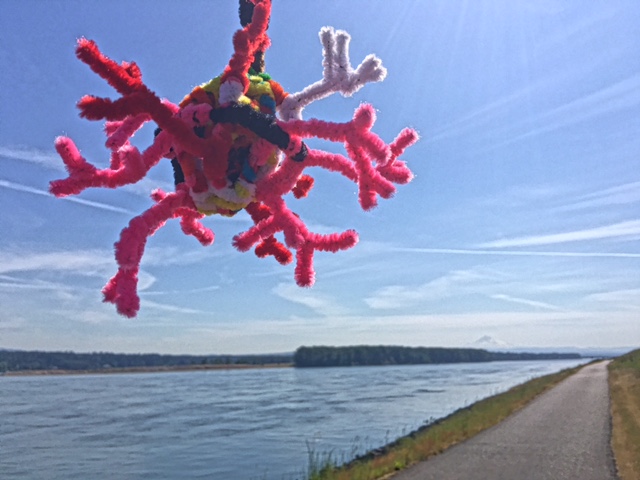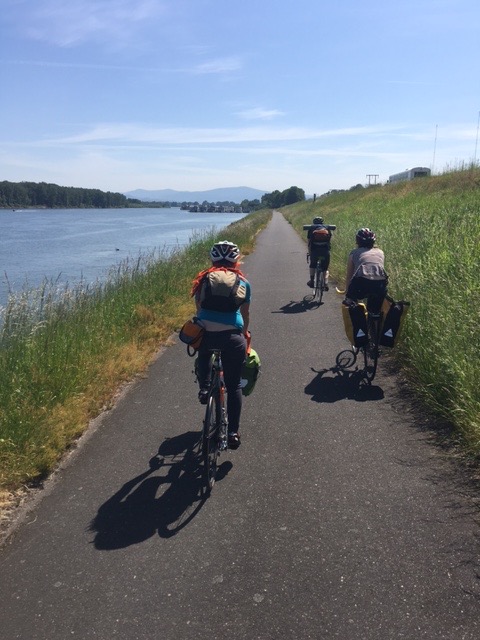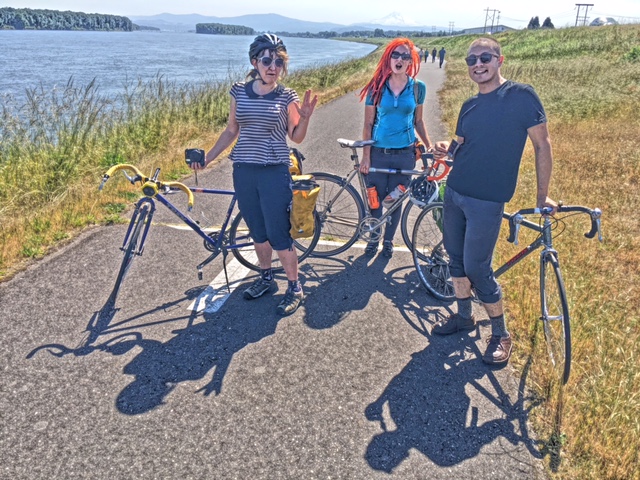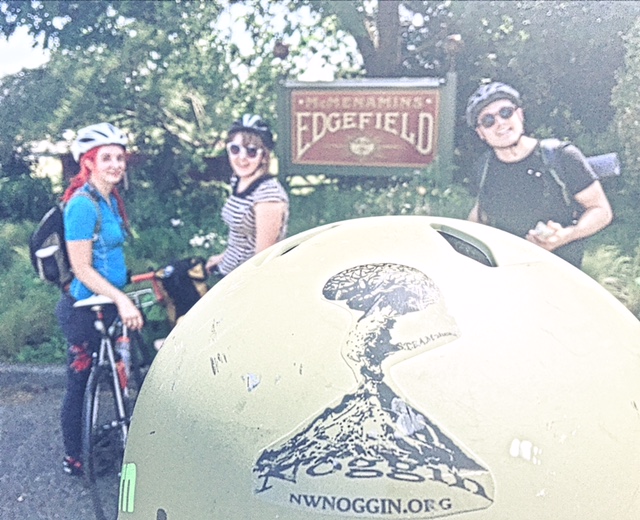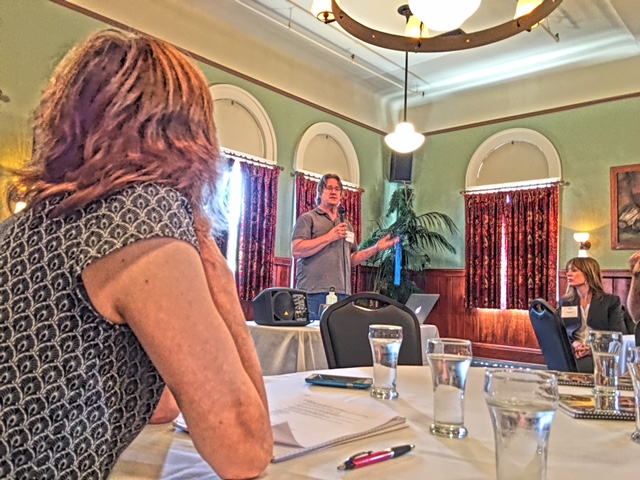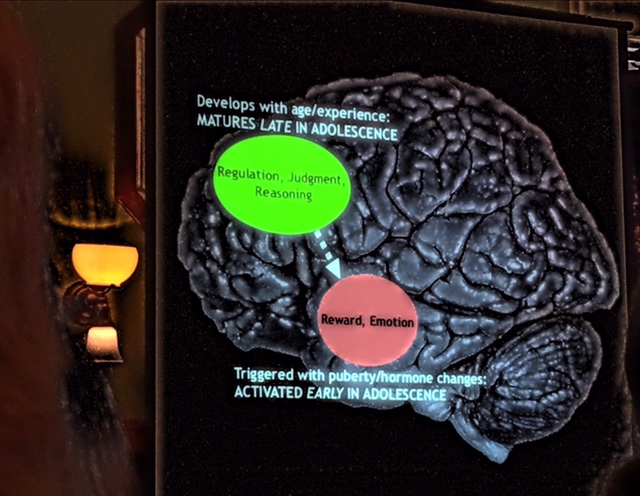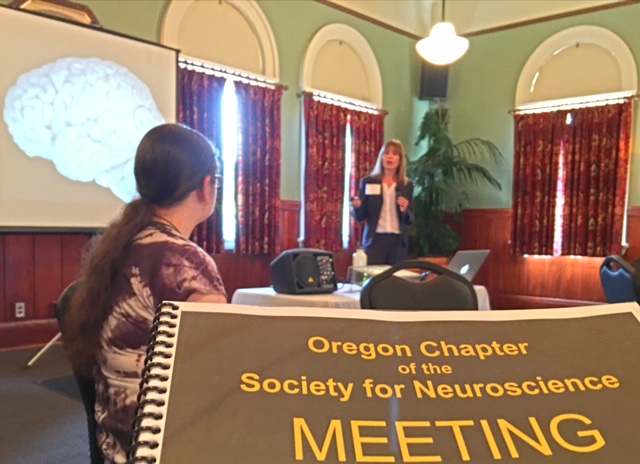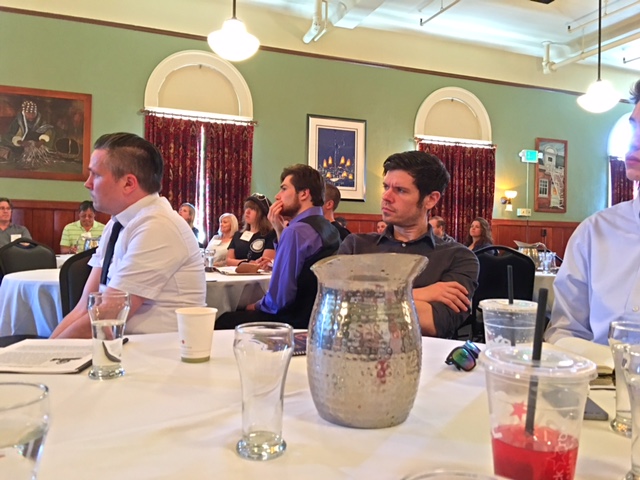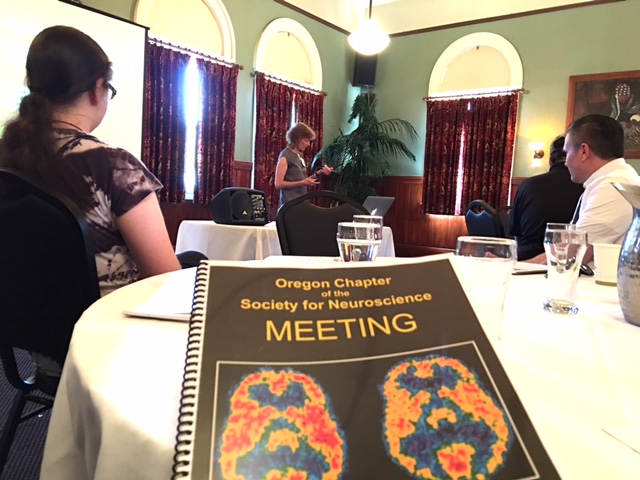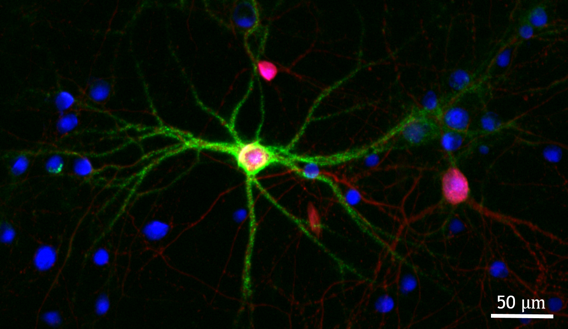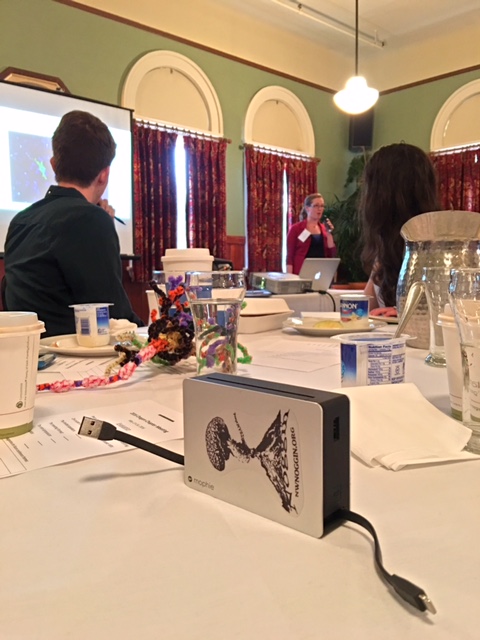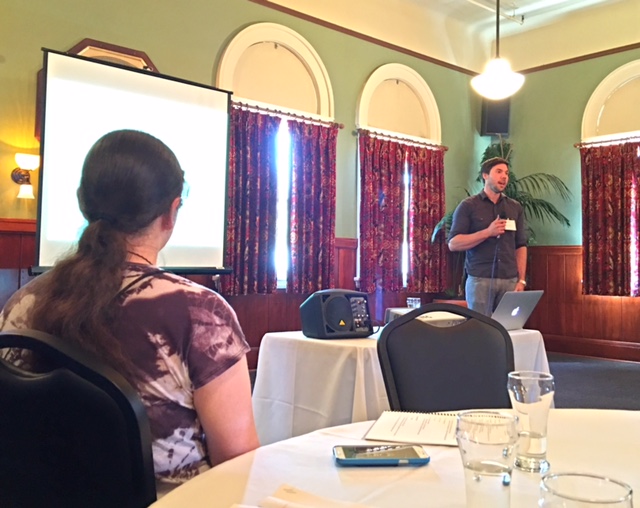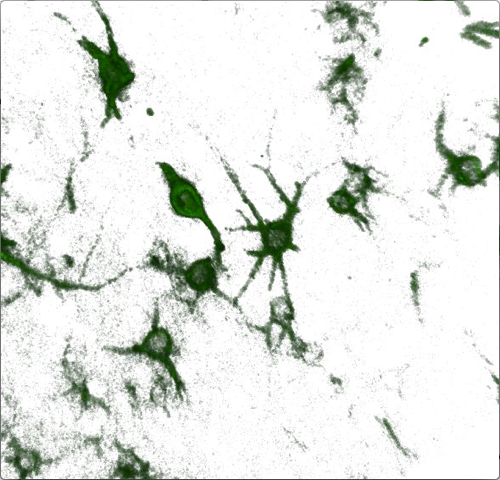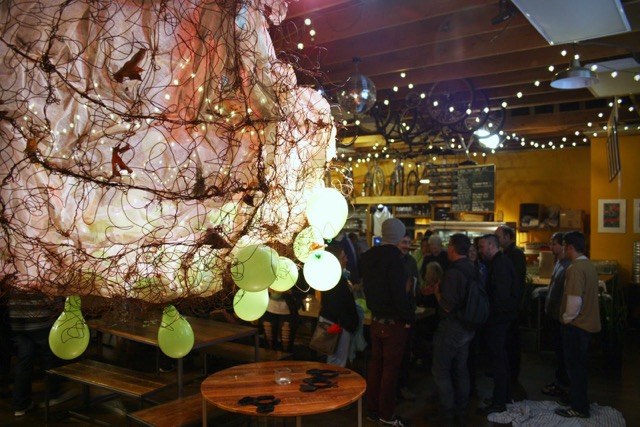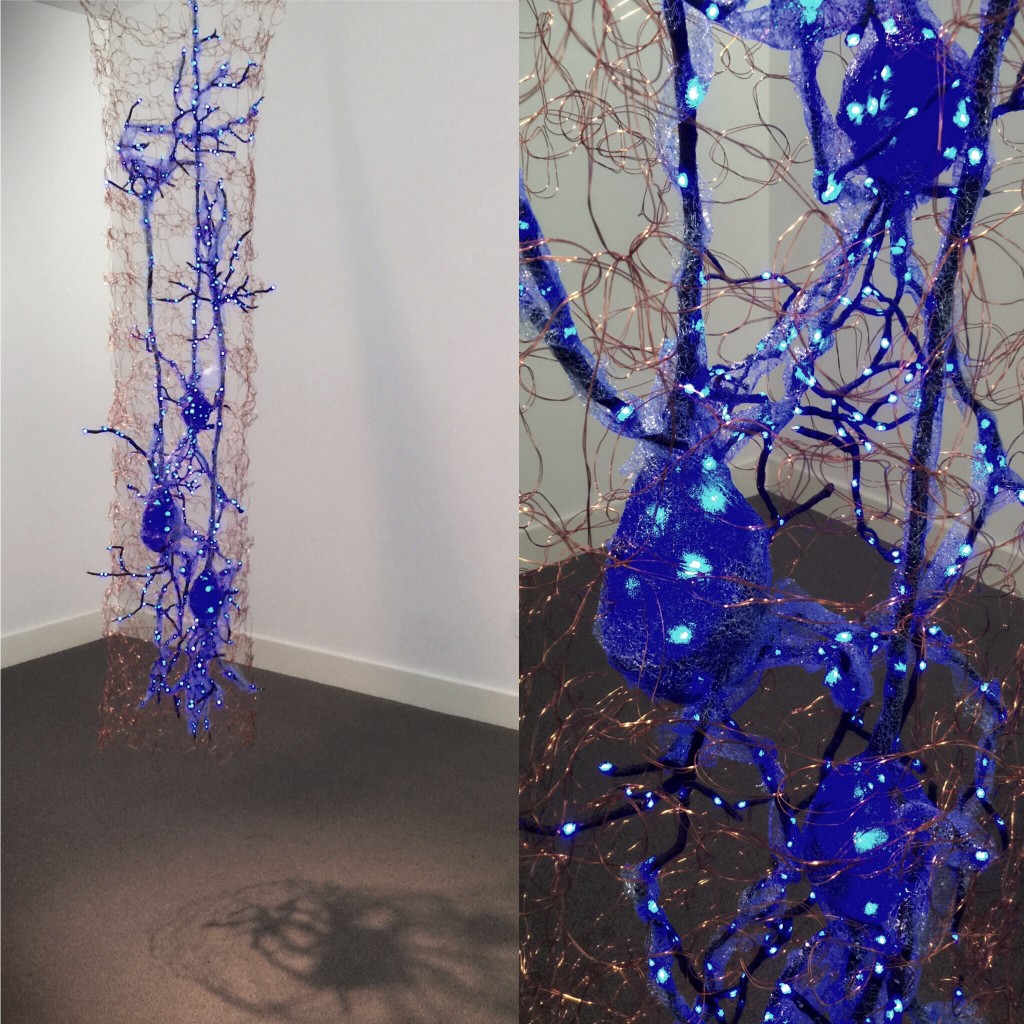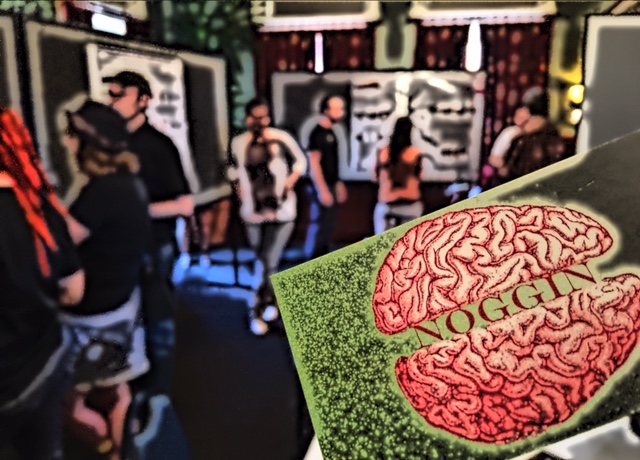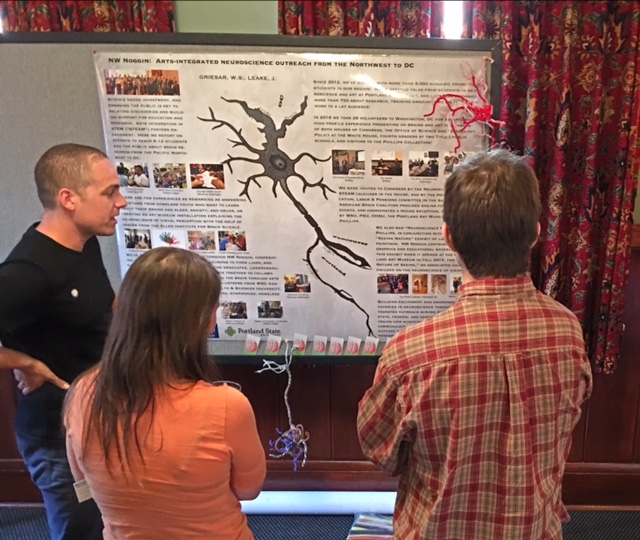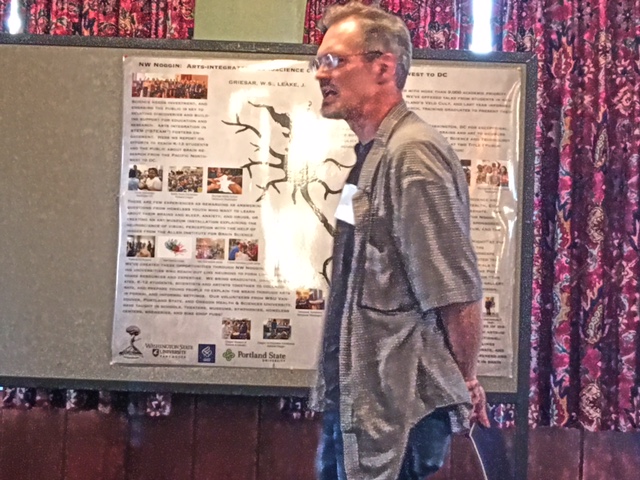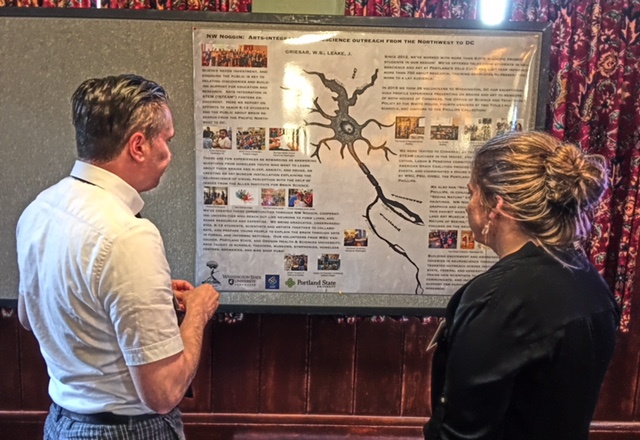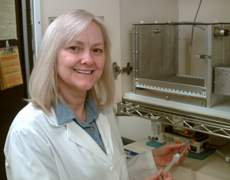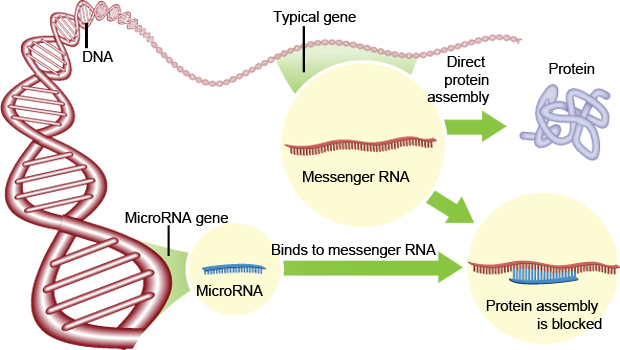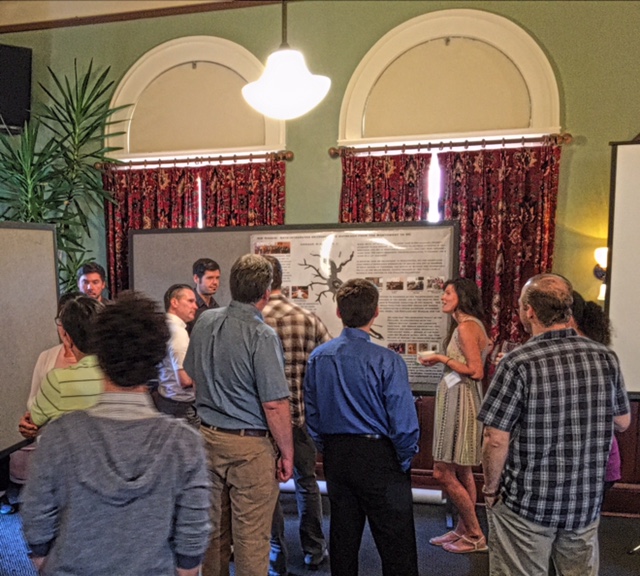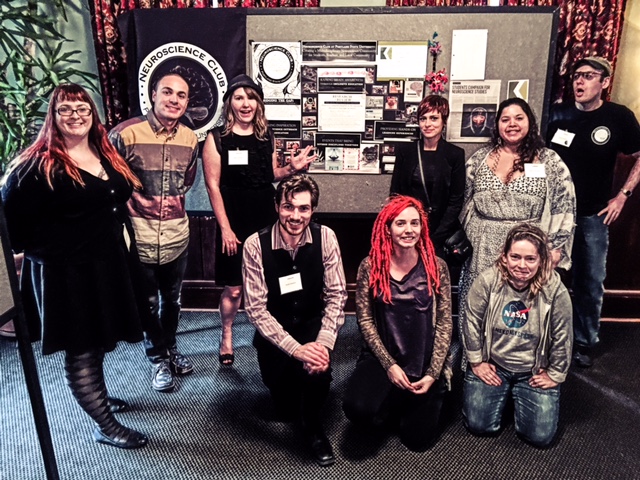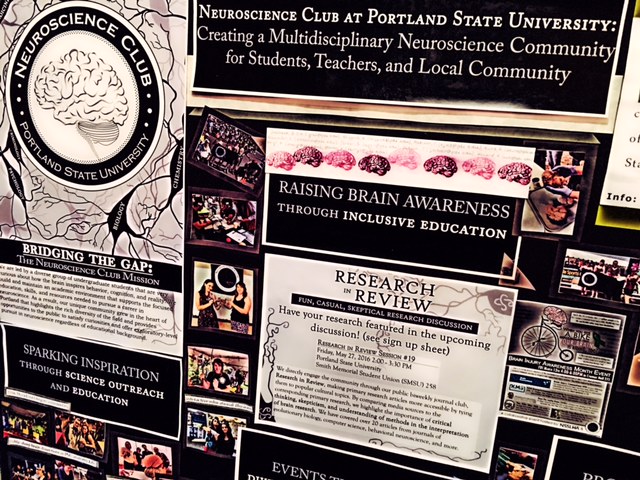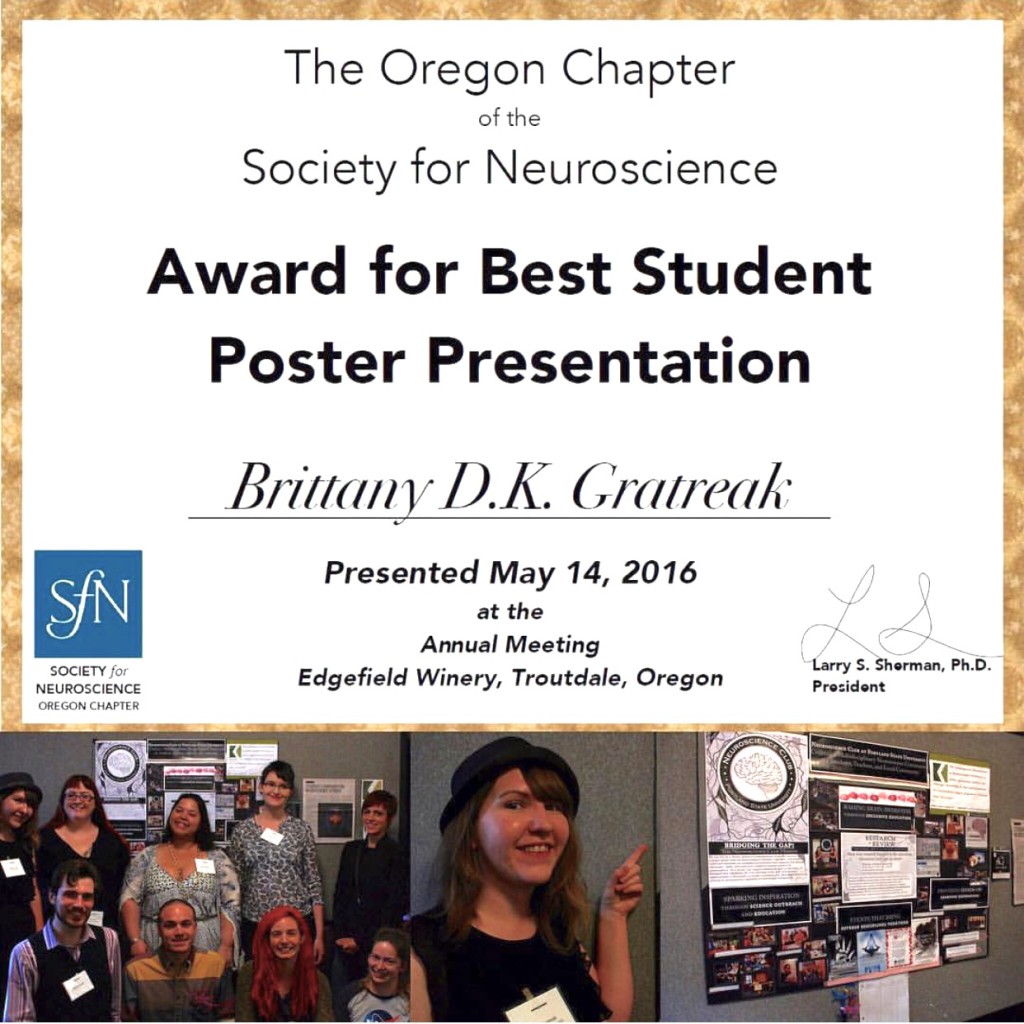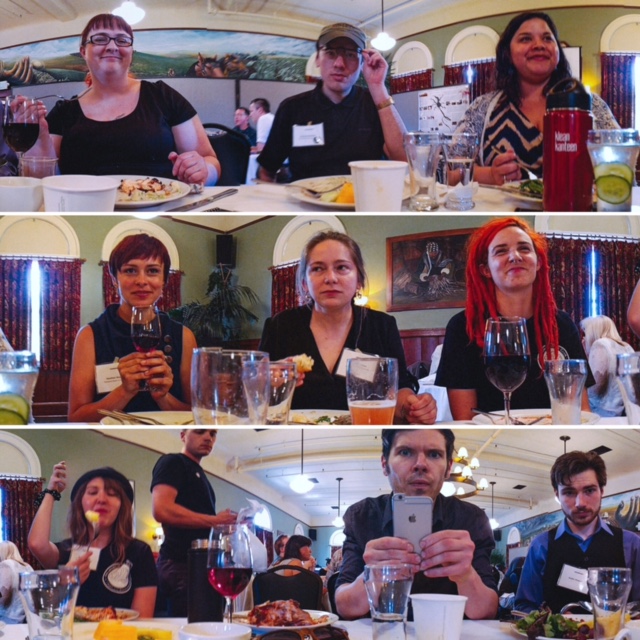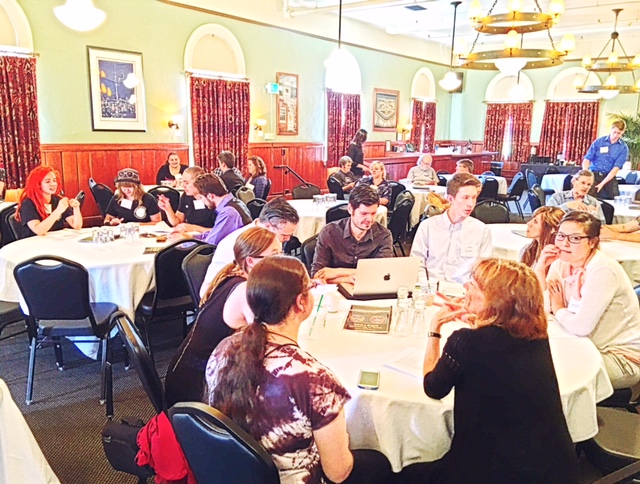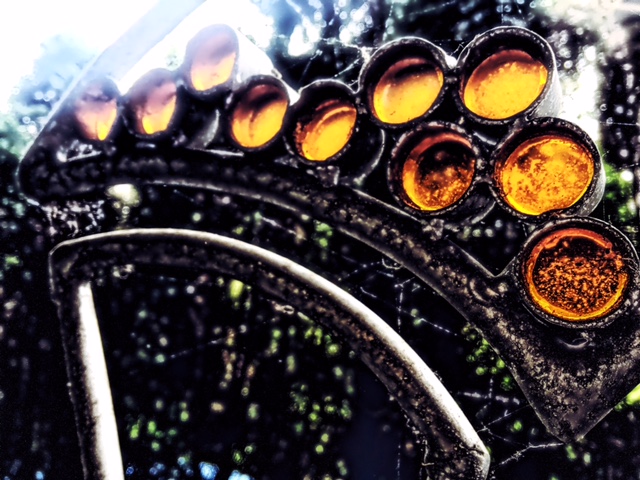Science thrives, community builds, and people learn when scientists get together with graduates and undergraduates from area universities to talk about research. The annual Oregon & Southwest Washington Chapter meeting for the Society for Neuroscience took place at the McMenamin’s Edgefield this weekend, and there were many opportunities for brain and social network enhancement…
The chapter meeting attracted 55 attendees in 2015, from the University of Oregon to WSU Vancouver, but this year a big push was made to involve more students. Over 90 people registered, including many from the active Neuroscience Club at Portland State University! This was the first time PSU students had attended SfN, and several biked the scenic route along the Columbia River…
We were also thrilled to offer a Velo Cult/NW Noggin SfN scholarship to Ben Yefimov (third from right, below), an undergraduate in Neuroscience from WSU Vancouver! The Neuroscience Club at PSU paid for all their many undergraduate attendees, who prepared a poster for the meeting…
The conference kicked off with Larry Sherman, President of the local SfN chapter, introducing the first speaker for a mini-symposium on “The Neuroscience of Addiction…”
Bonnie Nagel, an Associate Professor of Psychiatry and Behavioral Neuroscience and Director of the Developmental Brain Imaging Laboratory at OHSU, described her extensive imaging work in adolescents. She examines the differential structural and functional growth of brain networks critical for appropriate social decision making, and emotional responses, including reward.
Some drugs can disrupt normal brain development, and Dr. Nagel has studied Portland area teenagers for the last decade, trying to identify neurophysiological markers of risk and resilience for mental disorders, including dependence on drugs of abuse. Her talk focused on alcohol, and how she hopes to develop neurobiologically based prevention and intervention strategies to support healthier brains during this often challenging episode of life…
LEARN MORE: OHSU scientists awarded major NIH grant to study substance abuse and adolescent brain development
Dr. Nagel was followed by Barbara Sorg, a Professor in the Department of Neuroscience at WSU Vancouver. Dr. Sorg has studied drug abuse for more than twenty years, concentrating on contributions of the medial prefrontal cortex to cocaine-induced behaviors.
She has recently focused on the role of peri-neuronal nets, elegant chemical scaffolds surrounding neurons and their proximal dendrites. PNNs appear to restrict synaptic plasticity, by reducing access to neurons, limiting where new synapses might form…
Image source: ECM and synapse dynamics
PNNs, which were first identified by Italian neuroanatomist Camillo Golgi, the developer of the Golgi stain – yet dismissed as “artifacts” by Spanish neuroanatomist Ramon y Cajal – have started to receive much more attention by the Sorg lab and others, because of their impressively dynamic nature, and apparent role in regulating network plasticity.
LEARN MORE: Cajal + Creativity @ the NIH
LEARN MORE: One hundred years of Golgi’s “perineuronal net”: history of a denied structure
Barb found, for example, that acute cocaine exposure decreases net intensity, perhaps exposing more membrane for new or changed synaptic connections, thus increasing plasticity. In contrast, chronic cocaine actually strengthens those PNNs, which is potentially related to the fierce persistence of drug-related memories.
LEARN MORE: Caught in the Net: Perineuronal Nets and Addiction
LEARN MORE: WSU researchers see way cocaine hijacks memory
Barb also discussed current research suggesting that these changes may be mediated by oxidative stress. Nets were very popular at the Edgefield – both newly minted WSU Vancouver Ph.D. Megan Slaker and post-doc John Harkness presented further on PNNs at the chapter meeting…
Go Golgi! Perineuronal nets: Above pic by John Harkness
More nets. Quite beautiful. Pics above by Megan Slaker
Dr. Megan Slaker had also introduced PNNs at a NW Noggin Velo Cult event in 2014, along with Portland artist Dawn Nielson, who installed a huge, ceiling-hung net that audience members tried to synapse through using balloons as axon terminals! The more net, the more difficult it was for new synapses to form…
LEARN MORE: Velo Cult: Megan Slaker & Dawn Nielson draw a memorable crowd!
LEARN MORE: Autumn Is So Over & Perineuronal Nets Aren’t Really Green*
*They are only green when stained with Wisteria Floribunda Agglutinin! (or balloons)
Dr. John Harkness also promoted nets to the public in his own Velo Cult presentation with Portland artist Kindra Crick. Kindra’s striking PNN structure was also on display at the Phillips Collection during our outreach week in DC this spring…
LEARN MORE: Your brain is plastic @ Velo!
LEARN MORE: Brains, Beauty, & Brews: Noggin at the Phillips
Image above by Kindra Crick
We also heard from Matthew Ford from the Division of Neuroscience at the Oregon National Primate Research Center. He presented some fascinating and relevant work on multi-drug use in both rodents and macaques. While alcohol and nicotine are pharmacologically distinct substances, with differing interoceptive effects, making them simultaneously available to mice or monkeys (and presumably other primates) significantly increases the intake of both drugs. Smoking and drinking encourage more smoking and drinking, with notably higher “bouts” of consumption than seen in environments limiting access to one drug alone. Prohibiting smoking in bars and restaurants seems like a reasonable legislative response!
After the mini-symposium, we enjoyed terrific posters by post-docs, graduates and undergraduates, and also presented on our own outreach work in the Pacific Northwest, and DC!
Many of our Noggin participants from PSU, OHSU and WSU Vancouver took the lead in describing their experiences bringing brains and art and research discoveries to K12 students and the general public – and even Congress, the White House, the NIH, and the Phillips Collection in DC!
That evening we enjoyed dinner and a presentation by the keynote speaker, Janet Neisewander, a Professor in the School of Life Sciences and Director of the Interdisciplinary Graduate Program in Neuroscience at Arizona State University.
Dr. Neisewander offered an introduction to the regulatory role of microRNAs, which are short mRNA transcripts generated by what was once considered “junk” areas of DNA. We are starting to discover that these gene products, while not translated themselves, can play a significant role in modulating the translation of proteins critical for neuron function.
Her talk was particularly fascinating because of how it illustrated the potential highs and lows of research – the hypotheses that aren’t validated by experiment, yet which suggest new directions for exploring questions further. She told a great story.
Image source: The Sea Change That’s Challenging Biology’s Central Dogma
This is a new area of research, with therapeutic promise, as targeting microRNAs may one day prove beneficial in addressing changes in gene expression and behavior resulting from drug abuse.
LEARN MORE: Student’s research could lead to cure for cocaine addiction
The next morning, fueled by coffee, we enjoyed more talks, including one relating particularly enthralling imaging work on memory from Dasa Zeithamova, an Assistant Professor of Cognitive Neuroscience at the University of Oregon.
Dr. Zeithamova walked us through an extraordinary series of fMRI studies illuminating the precise hippocampal subfield contributions to various aspects of memory reactivation, and comparison with present experiences.
LEARN MORE: CA1 subfield contributions to memory integration and inference
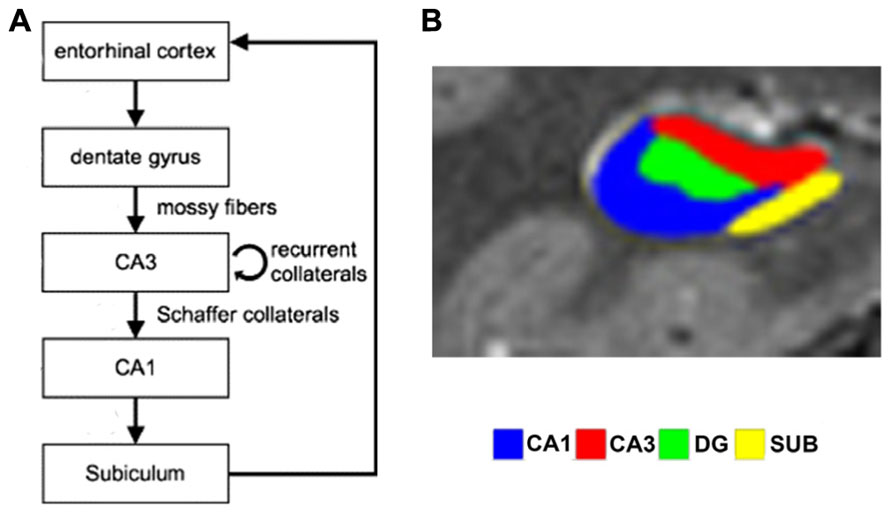
Human functional magnetic resonance imaging (fMRI) studies have long investigated the hippocampus without differentiating between its subfields, even though theoretical models and rodent studies suggest that subfields support different and potentially even opposite functions.
Image source: Human neuroimaging studies on the hippocampal CA3 region – integrating evidence for pattern separation and completion
There were many more talks at this chapter meeting, and lots to discover! We learned about another mRNA regulatory mechanism (RNA granules) from Sean Speese, a Research Assistant Professor at the OHSU Jungers Center, and heard from biologist Erik Zornik of Reed College about how some frogs generate ascending modulatory input from lower to upper motor neurons!
LEARN MORE: Nuclear envelope budding enables large ribonucleoprotein particle export during synaptic Wnt signaling
LEARN MORE: Bio Prof Wins $444K Grant from NIH
There were many new posters as well. The winning post-doctoral poster, titled “The role of anterior dorsal lateral hypothalamic area PNNs in the acquisition of both cocaine-induced CPP and self-administration,” was presented by Jordan Blacktop from WSU Vancouver.
Neuroscience at WSUV also contributed ONE of the winning graduate/undergraduate posters, titled “Larval Zebrafish Lateral Line as a Model for Acoustic Trauma,” by Beija Villalpando!
And there was another winner for this particular chapter meeting poster award: the PSU Neuroscience Club! Their winning poster was titled: “The Neuroscience Club at Portland State University: Creating a multidisciplinary neuroscience community for students, teachers and local community members..!”
Undergraduates contributing to the winning first place PSU poster were Britt Gratreak, Kayla Stippich, T. Madison, Alex Kunz, Bekah Alexander, Jedidiah Acott, Allie Clark, Rachel Hill, Gaile Parker, Annalicia Whittaker, Jacob Schoen, Austin Howard, Alex Voigt and Kerry Hootan.
It was definitely a nice way to conclude the first Society for Neuroscience chapter meeting for PSU! These students have worked hard to raise campus awareness of neuroscience, through their award winning Neuroscience Club, and their many outreach efforts with nwnoggin.org…
LEARN MORE: Students campaign for neuroscience studies, PSU Vanguard (5/10/16)
Undergraduates, graduates, post-docs and PI’s managed to make lots of excitatory connections…
Many thanks to Larry Sherman and Robert Duvoisin, who presented all the speakers – and to Kate Stout of the OHSU Brain Institute for organizing a fun and informative meeting!




